Didcot power station: Explosives to be used in demolition
- Published
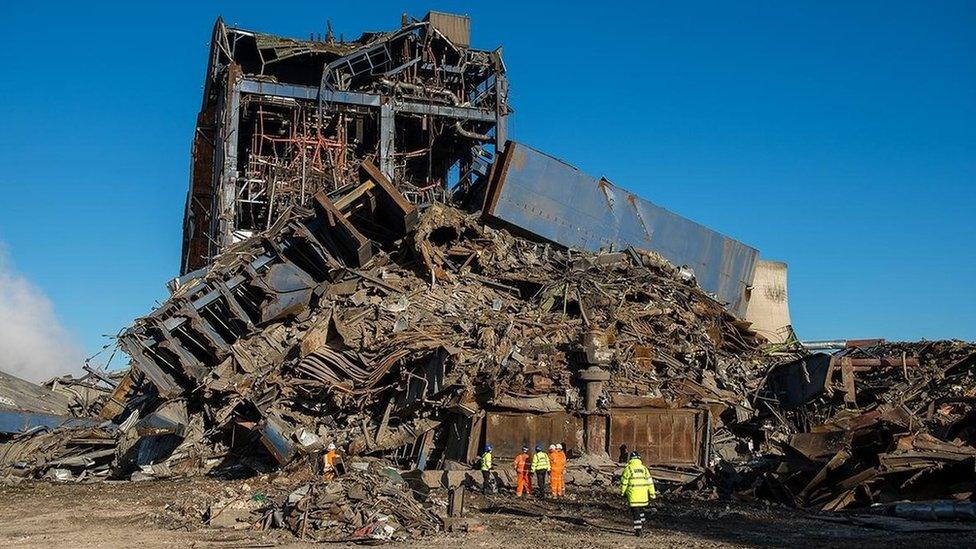
About 20,000 tonnes of material still needs to be sifted through at the site
Explosives are to be used to demolish the remaining section of the collapsed Didcot Power Station.
Four workers were killed and five injured in the collapse in February, with one body recovered from the site.
RWE Npower said it knew controlled explosions at the site would be distressing for the missing workers' families.
The firm said it would ensure the remaining building falls away from the existing debris pile.
Updates on this story and more from Oxfordshire
The Health and Safety Executive is carrying out a joint investigation with police into the cause of the collapsed boiler house.
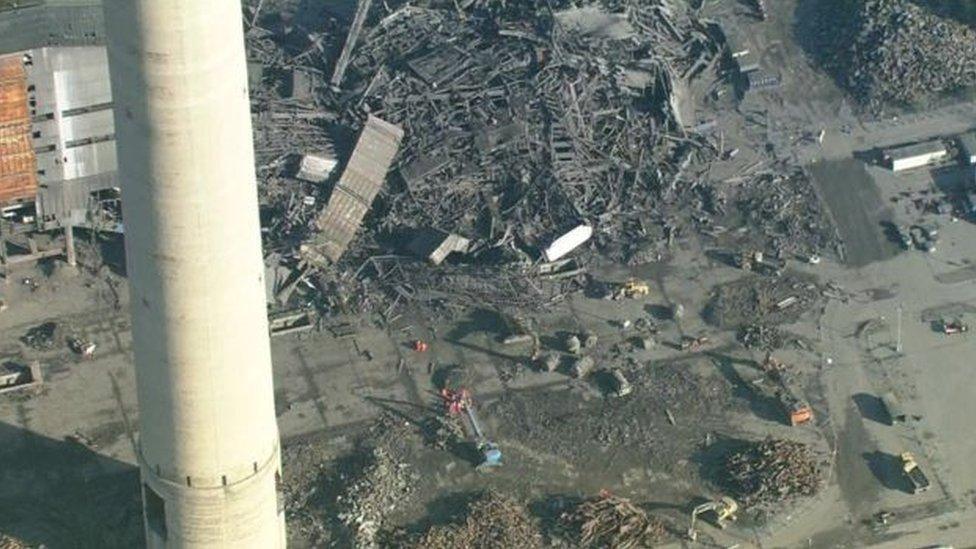
The plant was set for demolition when it collapsed in February
A spokesman for RWE Npower said: "The recovery work can only be completed safely once the unstable standing structure has been brought down.
"Having explored other manual options, our experts have made it clear that the quickest and safest way to bring the building down is by controlled explosive demolition."
The recovery mission began on 19 March and is being supported by forensic archaeologists and structural engineers, with drones and cameras gathering information.
The bodies of Christopher Huxtable, 34, from Swansea; Ken Cresswell, 57, and John Shaw, 61, both from Rotherham, have not yet been found.
The body of Michael Collings, 53, from Brotton in Teesside, was recovered from the site.
RWE Npower said the families of the missing have been told about the plans.
- Published20 April 2016
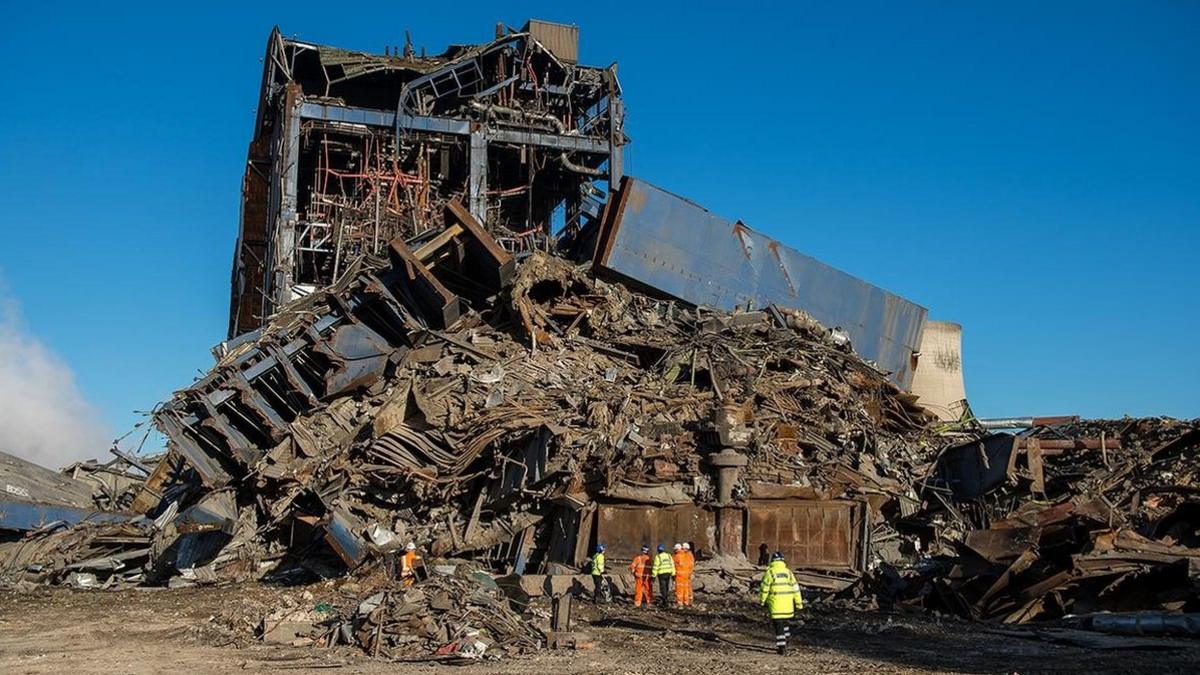
- Published20 April 2016
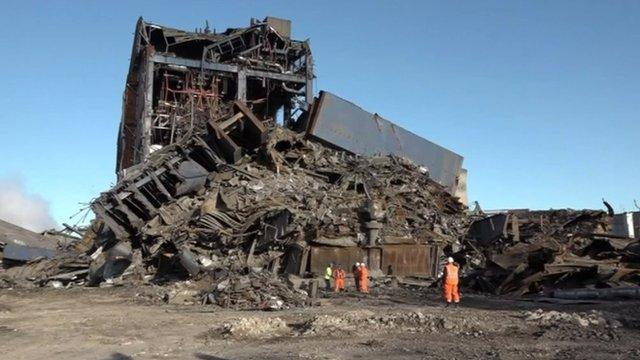
- Published19 March 2016
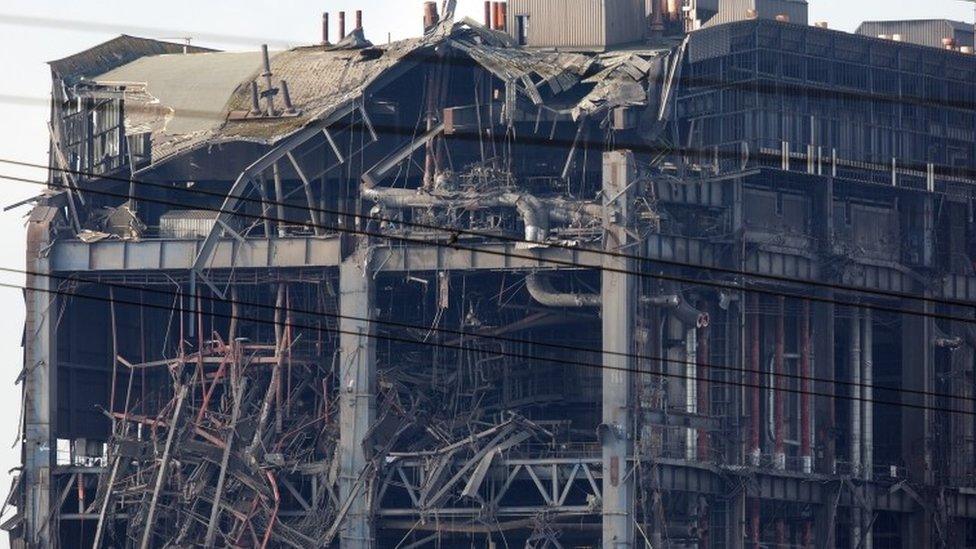
- Published16 March 2016
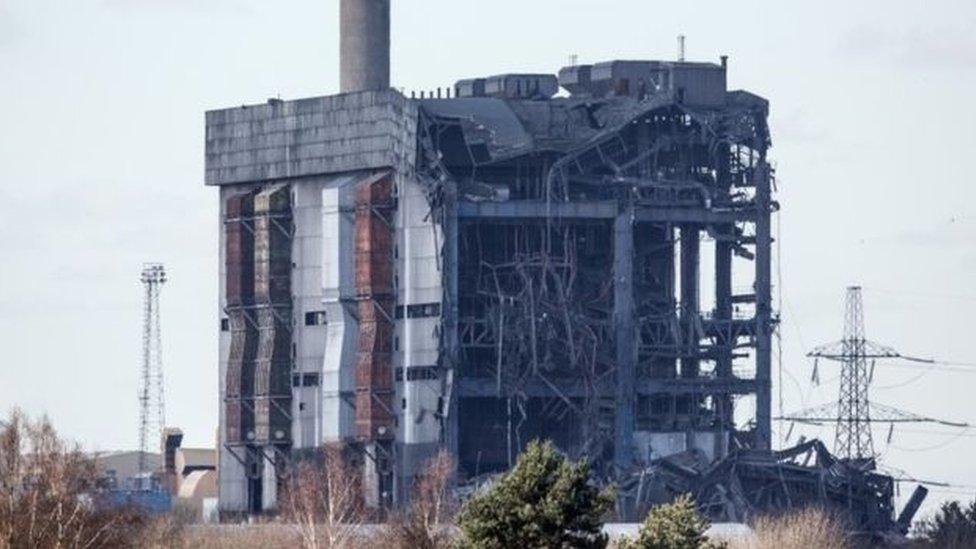
- Published7 March 2016
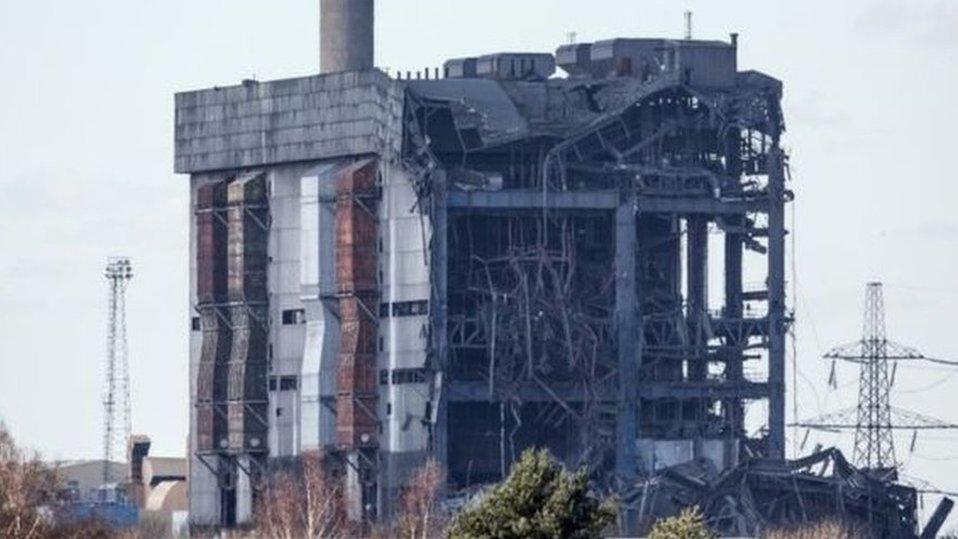
- Published1 March 2016
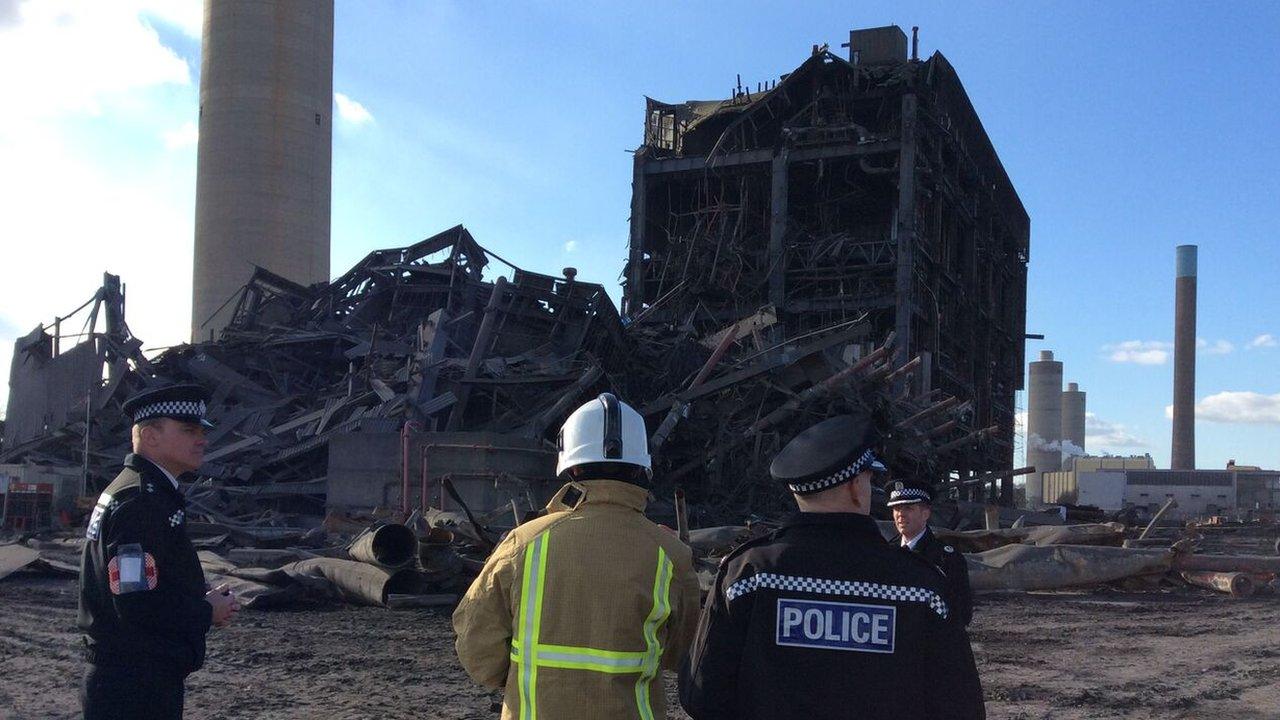
- Published15 March 2016
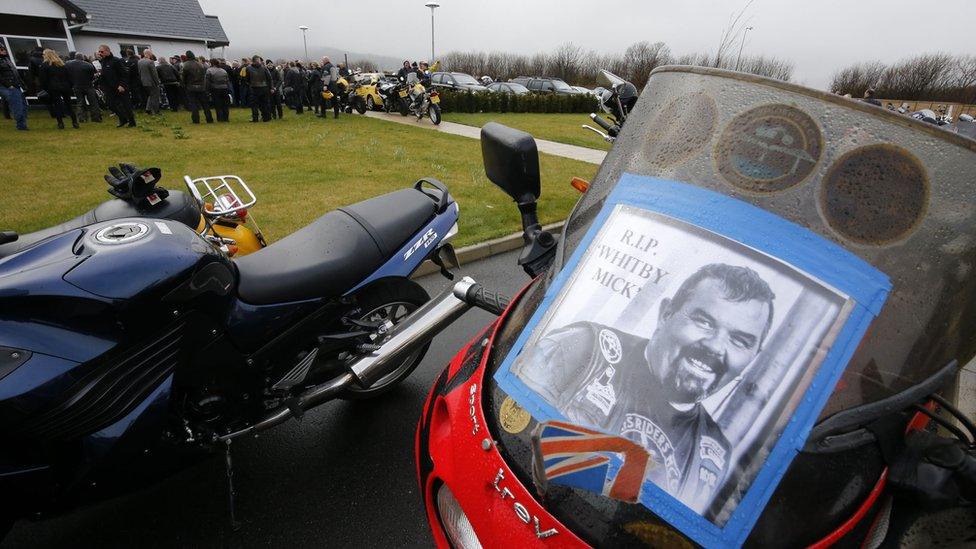
- Published22 February 2016
